Reviews 11 min read
Lotus Eletre S: The World’s first ‘hyper-SUV’
What is a ‘hyper-SUV’ I hear you ask? It’s a fancy new category coined by the car maker as a way of saying we’ve made an all-electric SUV but it’s still a Lotus. Is it any good though?
Discover EV expert verdict...
- It’s fast – very fast!
- Spacious and practical
- Beautiful interior
- Porsche Taycan handles better
- Over quoted range and inefficient
- Some quality issues
Overview
The Lotus Eletre is designed to offer the same levels of excitement as its powerful two-seater models but with the comfort, space and practicality of an SUV. It’s a tall order for any manufacturer to pull off a sporty SUV – not least when you’ve got heavy batteries to contend with that impede both driving dynamics and space. Does this new breed of Lotus stand in a class of its own while encapsulating the brand’s heritage? We live with an Eletre S as our family car for one week to find out.
Driving
Two things struck me when I first drove the Lotus Eletre S. Firstly, it is fast. Like insanely fast. While quite a few EVs can match its zero to 62mph time of 4.2 seconds, it’s how quick the scenery flashes past your window above that speed until it reaches 160mph! Note I didn’t reach this figure, but the acceleration past 70mph is just immense! If 603hp and 524lb-ft of torque isn’t enough for you there is a Flagship R model, which puts 905hp and 727lb-ft through a two-speed transmission. It can do the acceleration run in a quite frankly insane time of 2.95 seconds.
My second thought was just how crashy the suspension was and this made me very sad.
So, I delved a little deeper into the settings and found that by tweaking a few things the car became less fidgety and drove a lot better. As soon as you get in, adjust the seat as low as possible. Then turn off some of the driver assistance systems (namely speed limit warnings and lane-keep assist) so that the car doesn’t constantly beep at you or yank the steering wheel. Next you’ll need to change the driving mode via the right paddle behind the steering wheel (or through the central touch screen). It defaults to ‘Tour’, which balances driving comfort and energy consumption, but unless you want the car to overreact to every undulation in the road put it in ‘Sport’ which sharpens the powertrain and chassis response, and generally makes this car more drivable.
I should probably mention the other modes here. There’s ‘Range’ which reduces the energy consumption of systems such as climate control, optimises front and rear torque distribution, offers a more progressive accelerator pedal response to increase range and also sets the ride height to low and ‘Off-road’ which raises the car by 25mm and can be used to enhance traction on low-friction surfaces to remove the risk of wheel spin but it ain’t no Land Rover. You can also choose specific settings for powertrain, suspension and steering via ‘Individual’ mode.
The last thing you’ll want to do is alter the regenerative braking – this time using the left paddle on the steering wheel so that it’s off – the pedal feel is a lot better when it favours friction over regenerative.
It’s a bit of a grower this car, because by the end of the week I definitely found it a lot more fun. It’s probably worth noting that our test car was equipped with 23 inch wheels – I suspect with 22s it would ride a whole lot better. And credit where it’s due, its handling and comfort is really very good for a car that weighs just over 2.5 tonnes and is the same size as a Range Rover. The steering is nicely weighted, quick and communicative, on the motorway it’s extremely comfortable, smooth and serenely silent and it’s even future-proofed for Level 4 autonomous driving capability. But, despite its very clever advanced suspension systems and chassis tech it’s not a true Lotus. If you want a driver’s car for the same money go for the Porsche Taycan Cross Turismo.
Range and running costs
And I’m afraid we’re going to have to mention the P word again. Lotus say the Eletre has 373 miles of range but in reality the figure on our test car hovered around 310 and if you do a lot of motorway miles expect that to drop to 290 miles. Generally speaking, the Porsche Taycan meets or exceeds it range ratings.
Lotus are however accurate when they quote a combined consumption figure of 2.2miles/kWh. Since our test car left the factory it was showing an average consumption of between 2.3 and 2.1 mi/kWh. While it’s true to life, it’s also pretty poor. The Porsche, with a very gentle driving style, will eke out a few more miles (up to 3mi/kWh), while the Tesla Model X will return around 3.4
On the upside it can charge at up to 350kW, which in just 20 minutes is enough to juice up from 10-80 per cent, and more than 74 miles of range can be added in five minutes. That said these charging stations are few and far between in the UK. In addition all models feature a 22kW on-board AC charger as standard, so customers with a 22kW wallbox at home will be able to fully replenish the battery from 0-100 per cent in less than six hours.
Running costs? The entry-level Eletre starts at £89,500, increasing to £120,000 for the R. The S sits at £104,500 but our test car had almost 15 grand's worth of options which is easily done once you start getting into customising the exterior and interior, and ticking the equipment and driving aids you'll want. If you can get one on a salary sacrifice scheme this arrangement will slash motoring expenses, often by over 50 per cent, compared to personal contract purchases or hire agreements.
And, if you can charge at home it can cost around half the price of filling up an equivalent petrol vehicle, plus servicing will be cheaper without the need for oil changes, or to replace air, fuel or spark filters. Insurance would be around the same for an equivalent petrol vehicle, and in terms of depreciation, data from Auto Express reveals an average retained value (over three years / 36,000 miles) of just under 60 per cent.
Design
The Eletre is characterised by a cab-forward stance, long wheelbase and very short overhangs front and rear. It’s certainly a head turner and its styling is purposeful. Up front there are these honeycomb grille shutters that automatically open to cool the motor and close to extend driving range, there are vents everywhere (in the bonnet, ahead of and behind the front wheel arches, behind the rear wheels, and even at the top of the D-pillar) to help it cut through the air more efficiently, while out back it’s got this split rear wing that pushes air down to the active spoiler which deploys when driven at high speed and generates over 110kg of downforce – which is cool but also serves as a brilliant visual aid for traffic cops to pull you over!
Just like the Tesla, you tap your keycard on the door to open it. This annoyed me when we had the Model 3 – they’re easy to misplace, and every time you lock the car you have to come back round to the driver’s side to lock it (our test car had keyless entry and exit with hands-free door unlocking/locking but I couldn't get it to work so perhpas I needed to download the app). If it’s been raining it doesn’t always work and our test car – despite having done very few miles – had scratches all down the B pillar from where it was tapped. Imagine how that’s going to look in ten or 20 thousand miles time.
We got a lot of comments enquiring what the LiDAR sensors were . Despite Lotus' best efforts to go almost flush with the surfaces of the car when not in use you can still see where the deployable sensors are mounted - there's one on top of the windscreen and rear glass and two in the front wheel arches. That said they've not compromised the overall design and I expect other manufacturers will follow in Lotus' footsteps in a bid to future-proof their cars.
WhIle it doesn't quite 'evolve the iconic design language of its mid-engine sports cars', the Eletre does manage to blend the 'core DNA of Emira and Evija'. when it comes to dramatic design treatment. Regardless of what you think though, you can’t deny it’s got a lot of presence.
The driver-focused cockpit and high centre console are inspired by the Emira and Evija. It’s spacious, luxurious and packed with technology... it represents a huge step forward for the brand! The layering of materials and textures gives it a real premium feel and I love the three digital displays – laid pretty much side-by-side across the whole dashboard. A slender, horizontal panel that tucks neatly under the top of the dash above the steering wheel relays vital driving information (complimented by a head-up display), while another touchscreen shares data with the passenger and in the middle there is a 15.1 inch OLED display, with a couple of small rockers for air con underneath and the glovebox button – although it’s not directly obvious what these operate! The £1200 glass roof option made it feel light and airy, the ambient lighting is slick, and generally it feels classy and well built but I did have a few issues...
Comfort and practicality
So, lets get the negatives out of the way first. The centre console includes a storage tray with wireless phone charging capability but it’s also the same place you need to put your keycard to drive the car, and I could not get my phone to charge over the week we had it. Although the standard fit and finish were very high, the car was suffering from quite a few squeaks and rattles already. The speaker grilles – as cool as they look are completely open and just asking to be filled with dust and general grime from kids. The central display is also very difficult to see when it’s sunny, and isn’t angled towards to the driver. Oh and one more thing – there are two cupholders, but one is too big and the other is too small! The rest of the centre console’s underside is taken up by gubbins for the KEF stereo, but it’s worth the trade-off. Lotus are particularly proud of this 2200 watt setup having persuaded KEF to develop its first automotive system, and it’s really rather good.
Now for the other positivies … It’s extremely comfortable and roomy enough for five adults – even with two child seats installed. The kids loved the 9 inch touch display in the back, which allows them to adjust their seats, climate – and annoyingly – audio systems, and when the middle seat isn’t being used, it can be lowered down to become an armrest, with two deployable cupholders. Weirdly if you opt for four seats, boot capacity is reduced to 611 litres (compared to 688) and you cant fold down the back seats. There’s a 46 litre frunk which is handy for cables but nothing else.
There’s a digital personal assistant and OTA updates, the optional Highway Assist pack is very good. Although a few times the Eletre’s sensors mistook a parked car for an object it thought we were about to hit, and while reversing out of our driveway onto the main road, it slammed on the brakes a few times and I had to re-engage reverse to carry on, which is quite dangerous when you're partially sat out on a fast bend.
Verdict
Let’s address the elephant in the room. It may be a ‘hyper-SUV’ but it’s so far removed from the road and race cars we all know and love from Lotus. It’s heavy, it’s massive, built in China and it’s packed with technology – the brand’s existing fans will hate it, but it will be the Eletre that redefines what a Lotus is. It is not as soulless as the Tesla Model X, its more luxurious than the Mercedes EQS SUV, but its not as good to drive as the Porsche Taycan, so for those that want space the Lotus Eletre could be for them.
Lotus has never really been known to make money, but Geely could change this with the Eletre, and for me that’s the most exciting thing about this car because it could mean the dawn of a new era – electric two-seater sports cars! Now, that’s something to get the purists interested surely?
Head to our YouTube channel @DiscoverEV to watch the video!
Key Specs
2024 Lotus Eletre S
Price (RRP OTR): From £89,500, £119,050 (model as tested)
Top speed: 160mph
0-62mph: 4.5 seconds
Power: 450kW (603hp)
Torque: 524lb-ft
Driving range (combined): 373 miles
Charging time: 5.8hrs (22kW, 0-100%), 20min (350kW, 10-80%)
Insurance group: 50
Vehicle warranty: 5 years / 100,000 miles
Battery warranty: 8 years / 150,000 miles




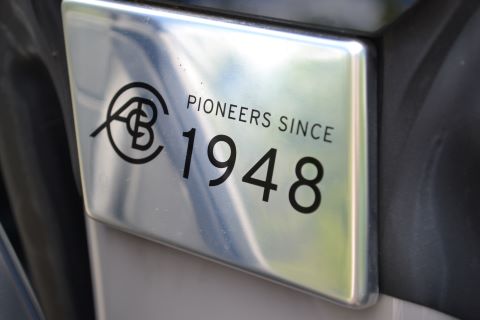

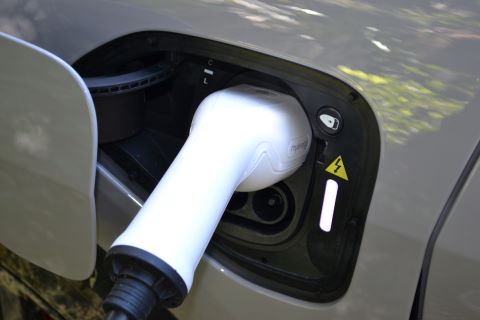
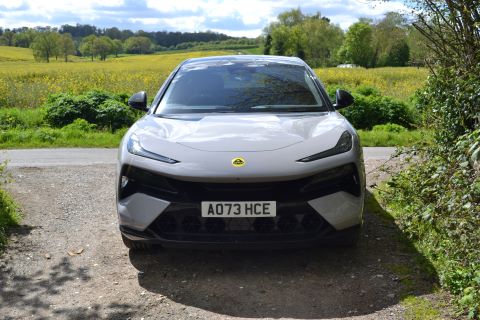
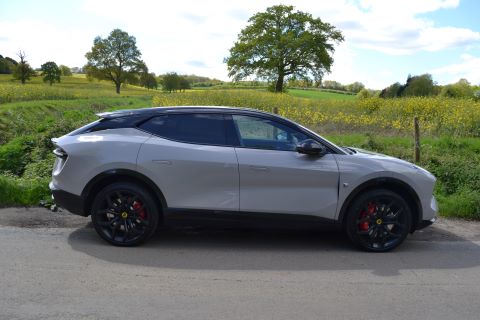
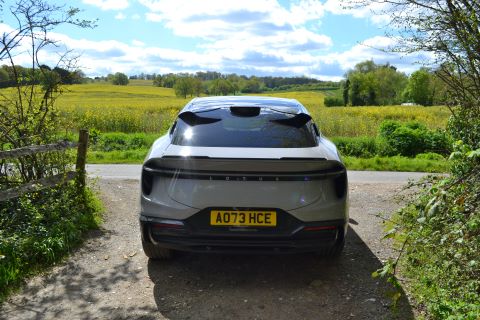
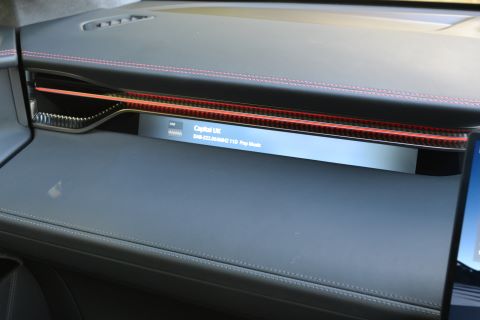
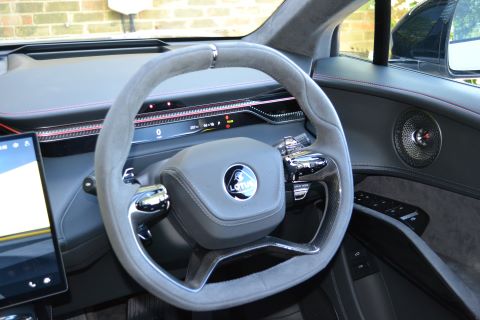
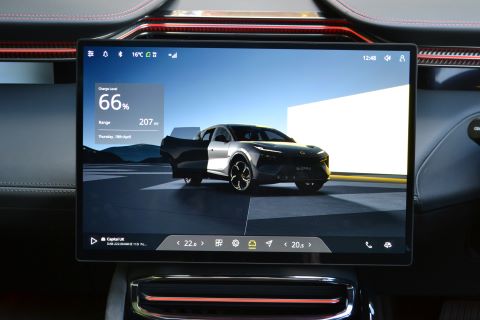
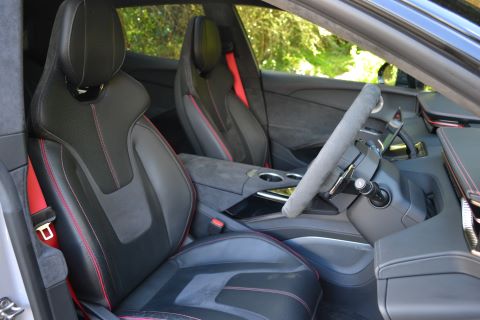
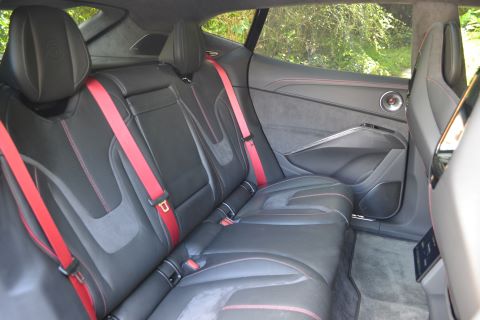
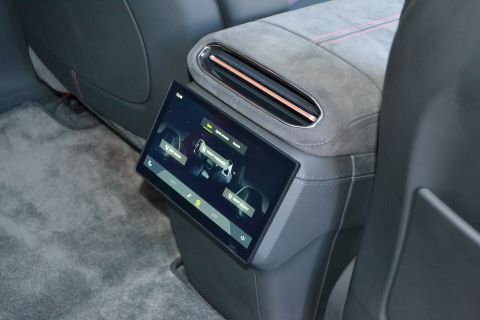
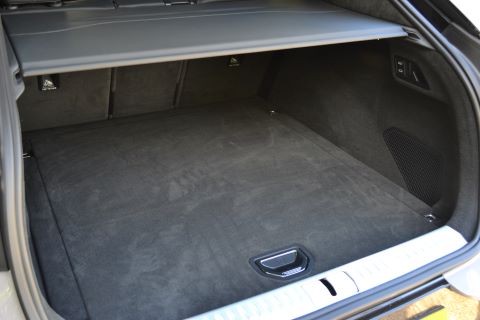
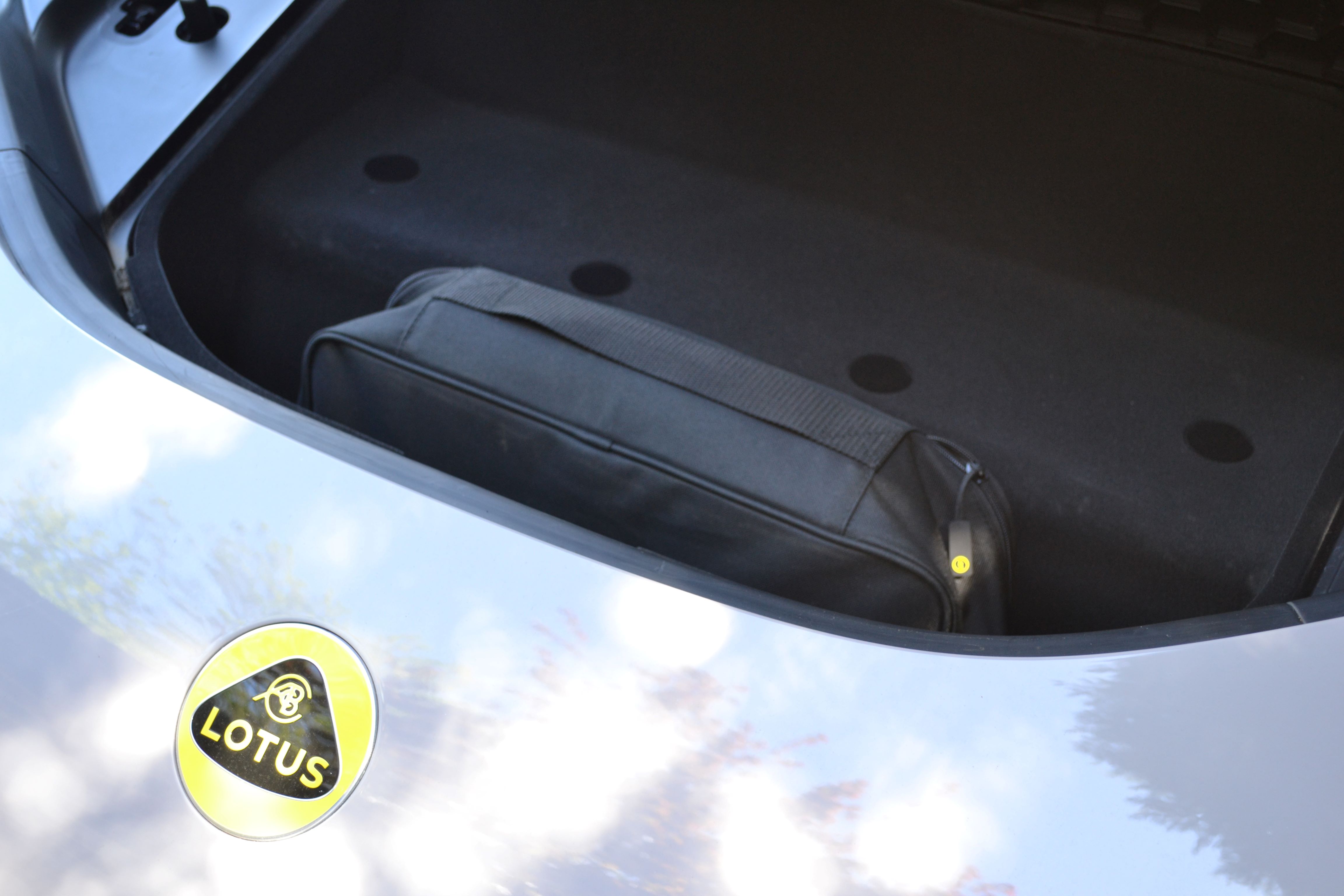
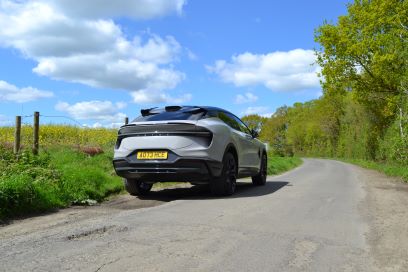






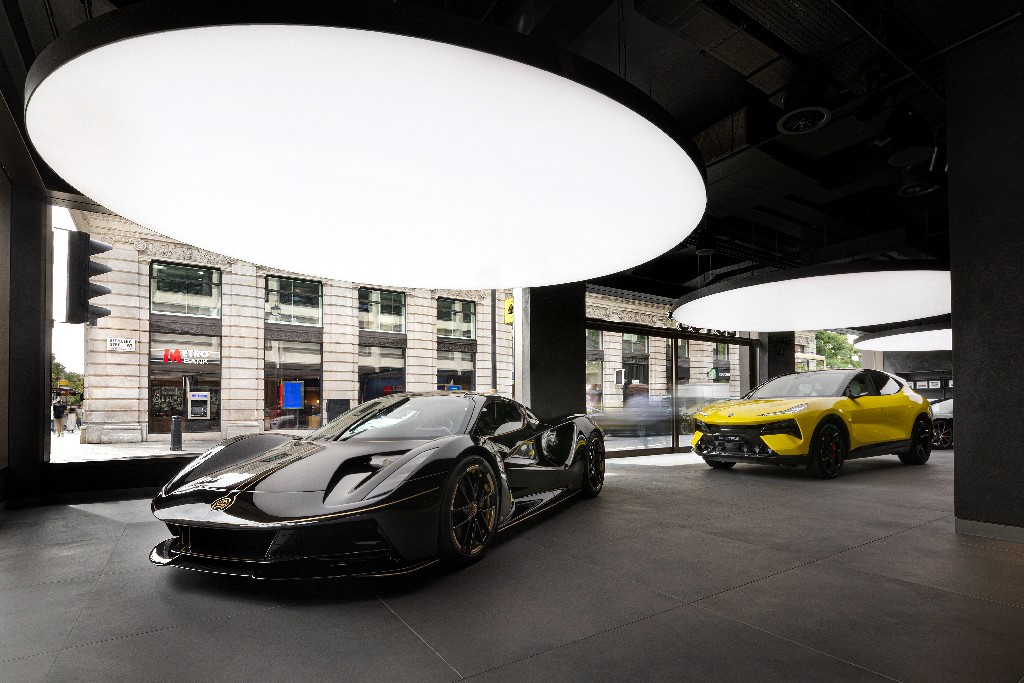

Comments (0)
Be the first to write a comment
Login/ Signup